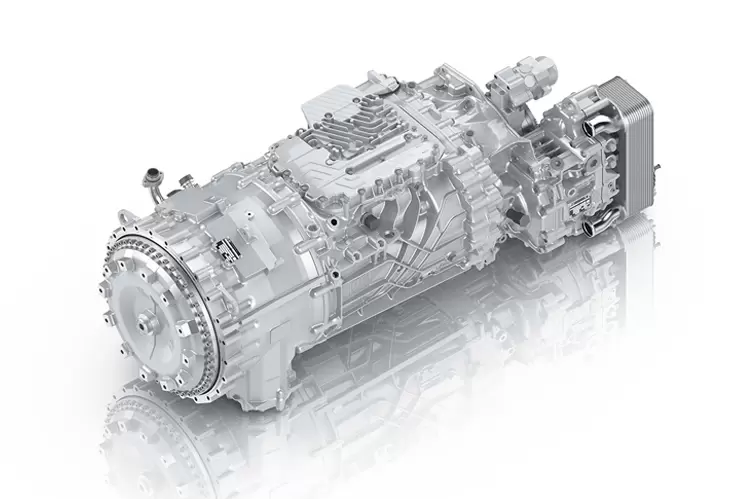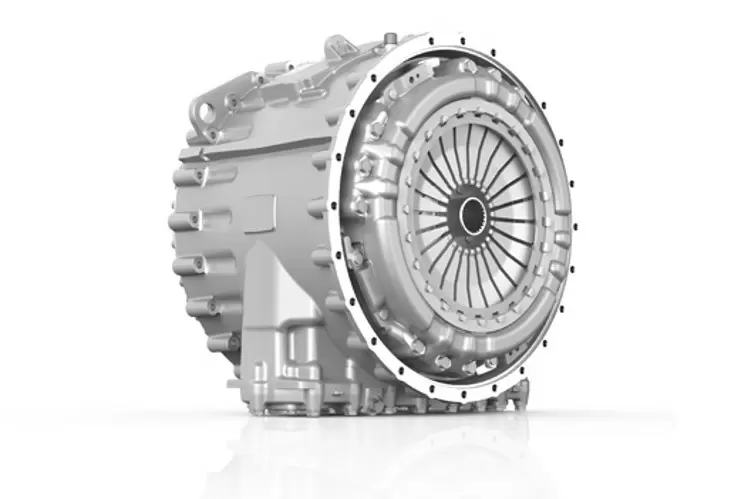TraXon Torque >TraXon with Torque Converter Clutch
Best combination of two technologies
Key Facts
What can TraXon Torque >TraXon with Torque Converter Clutch provide?
When heavy equipment is used, the torque converter clutch is the best choice to get things moving quickly and smoothly; also for the driveline. In the TraXon Torque the TraXon transmission is combined with a torque converter clutch as the starting component. Setting off and maneuvering is comfortable even when very high input torques are transmitted, without jerking or wear – thanks to the hydrodynamic torque converter.
Details
Benefits & Advantages
- Higher torque possible – thanks to torque increase when setting off or when opening the lock-up clutch in extreme situations
- Setting off on steep gradients and driving uphill at higher speeds is possible
- Boost mode in extreme situations
- Torque converter lock-up during travel and zero-wear shifting and clutch actuation with the basic transmission
- Common on-site control unit for Intarder and torque converter clutch (TCC)
- Clutch protection by slip monitoring
- Low operation, maintenance and life-cycle costs
- High brake force and long service life of service brakes
- High system availability and long service life
Function
In comparison to a normal dry clutch, the torque converter clutch (TC or TCC) runs with multiple, higher starting torques. It is made up by an oil-filled hydraulic torque converter, the associated torque converter lock-up clutch, and a downstream dry clutch. Functional description:
- The hydrodynamic torque converter consists of an impeller, a turbine wheel, and a stator which build a closed, circular housing. The impeller, which is driven directly by the engine, converts the mechanical energy from the engine into hydrodynamic energy. In the turbine wheel, connected to the transmission's input shaft, the oil flow direction is reversed once it emerges from the impeller. The stator, located between impeller and turbine wheel, has the task of reversing the flow of oil emerging from the turbine once again, and re-directs it to the impeller. This redirection of flow delivers a corresponding level of torque to the stator, thereby increasing the turbine torque. The ratio of turbine torque to impeller torque is known as conversion (torque increase). The greater the difference in the speeds of the impeller and turbine, the higher the torque. Maximum torque conversion is generated when the turbine wheel is stationary. As turbine speed rises, the level of torque conversion declines (output speed). No further torque conversion takes place once a 'turbine wheel-impeller' speed synchronization of approx. 80% is reached. At this point, the torque converter is locked up; consequently, the output torque is identical with the engine torque.
- The torque converter lock-up clutch upstream of the torque converter has been designed as a hydraulic multidisk clutch. It's task is to lock up the converter, i.e. to generate the mechanical connection between the engine and the transmission; thus, it limits torque converter operation to the range of its ultimate economic efficiency.
- The third major assembly of the torque converter clutch (TCC) is a dry clutch. This dry clutch will always be used once the torque converter is locked up and a gear change takes place.
TraXon Torque is the module for wear-free setting off with heavy transport vehicles and stands for smooth and comfortable maneuvering at low life cycle cos
Our recommendation for these transmissions
Downloads
Contact
Do you have any questions about our products, technical details or spare parts? Then get in touch with us using this contact form! Our experts will get back to you shortly.







